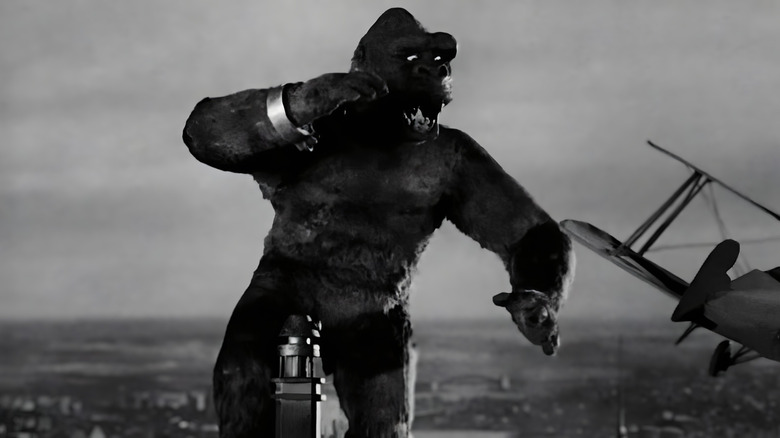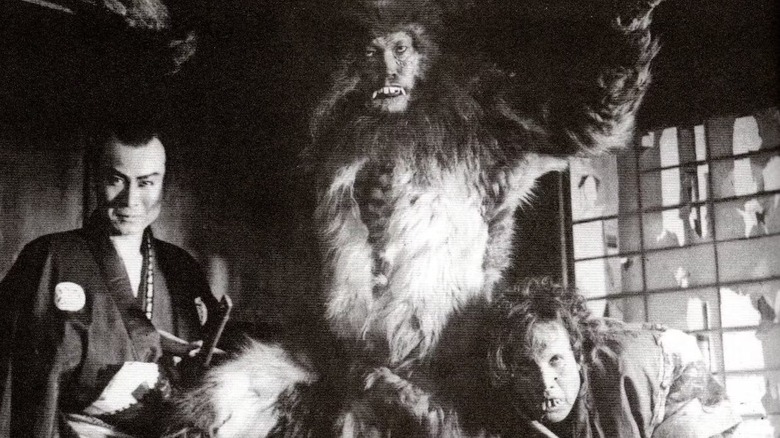The King Kong Rip-Off That's Impossible To Watch Today
The "King Kong" movies have been around for decades, with Merian C. Cooper and Ernest B. Schoedsack's original 1933 flick providing the blueprint for films about giant monsters. The legendary adventure tells the story of a film crew's expedition to an uncharted island that's home to prehistoric creatures, but none are fiercer than Kong — a giant gorilla who develops a crush on the crew's starlet, Ann Darrow (Fay Wray). Rather than escaping from the life-threatening island as soon as possible, though, the crew captures Kong and takes him to New York so they can showcase him as an attraction. Needless to say, Kong isn't happy about being chained up, and all hell breaks loose, culminating with the monster climbing the Empire State Building.
"King Kong" was a box office success that has since inspired sequels, remakes, and countless knockoffs from all around the world. Regarding the latter, Hong Kong treated us to the excellent "The Mighty Peking Man," while the United Kingdom has produced trashy treats in the form of "Konga" and "Queen Kong." The monsters in these movies don't hold a candle to the Eighth Wonder of the World, but the carnage they cause still makes for some entertaining viewing.
Unfortunately, Japan's attempt to capitalize on the craze, "The King Kong That Appeared in Edo," failed to make a lasting impression on viewers — because it's been lost for decades. The reason for the film's disappearance is shrouded in mystery, but it's believed all copies of Sōya Kumagai and Daijō Aoyama's monster opus were destroyed during World War II. That said, some information about the movie is available, and it sounds like a fun slice of kaiju mayhem.
What's the story behind The King Kong That Appeared in Edo?
"The King Kong That Appeared in Edo" doesn't even try to cover up its rip-off qualities. The title speaks for itself, and Zenshō Cinema reportedly released the film to coincide with "King Kong" getting a Japanese re-release in 1938. The story also concerns a primate who kidnaps a woman, but it doesn't have the same sweetness that Ann Darrow and Kong's relationship has, as the monster in the Japanese copycat works for a master who instructs him to abduct his enemy's daughter as part of a revenge plot.
With his daughter kidnapped, the aggrieved father commissions an expedition to find her, presumably bringing the crusaders into contact with a giant gorilla — or do they? Some historians believe that the nods to "King Kong" were only added to the film's promotional materials to capitalize on the aforementioned re-release, raising doubts about the primate's true size. However, the film's creature designer, Fuminori Ohashi, later put that rumor to bed, confirming that Edo Kong was indeed a giant monkey.
The inclusion of Ohashi is also notable — after all, he's the artist who designed the creature suit and model for the original "Godzilla." Interestingly, he also provided the special effects for Toho's "Godzilla vs. King Kong," which must have been a full-circle moment for the legendary artist, as it brought together two creatures that had an impact on his career. Granted, a "King Kong" knock-off movie isn't a real Kong flick, but it's close enough.

